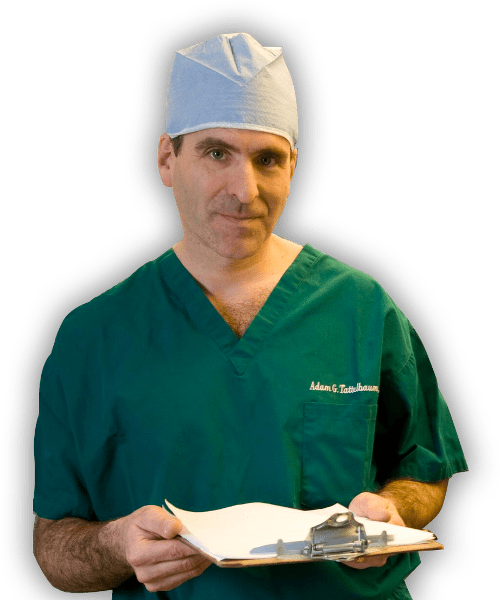Dermal Fillers Maryland
Dr. Adam Tattelbaum offers filler cosmetic procedures for patients in Maryland, Northern Virginia and Washington DC, from his offices in Rockville, MD, and Mclean, VA.
Book a free consultation with Dr. Tattelbaum to learn more.
A word from the Doctor…
“Everyone wants smooth, flawless skin. A great way to achieve this goal is with the help of fillers. Fillers fix everything from fine lines and wrinkles to lifeless lips.
As we age, we naturally lose collagen in the skin. In turn, that bouncy, plump appearance of youth can be lost.
I generally recommend injectable fillers to many of my patients who have lost some of their skin’s elasticity and are looking for small tweaks to their appearance — plumper cheeks or the reduced appearance of crow’s feet or frown lines. These procedures can make a nice difference, are minimally invasive, and require almost no recovery time.
If you’re ready to explore the transformative benefits of fillers, I’m here to guide you through the process. Let’s schedule a consultation to discuss your goals and create a plan tailored to your desires.”
Written by Dr. Adam Tattelbaum, M.D.

- Double board-certified Maryland plastic surgeon
- Member of the American Society of Plastic Surgeons
- Member of the American Society for Aesthetic Plastic Surgery
- Listed in “America’s Top Surgeons” by the Consumer Research Council of America
What are fillers?
- Lines from the corner of the nose to the outer lip (Nasolabial folds)
- Lines from the mouth to the chin (Marionette lines)
- Lines above the upper lip (smokers lines)
- Frown lines with or without Botox
- In the lips for volume and shape
- Restore volume to cheeks or chin
- Hollows under the eyes (the tear trough)
- Hands to make veins less noticeable
What are fillers?
- Lines from the corner of the nose to the outer lip (Nasolabial folds)
- Lines from the mouth to the chin (Marionette lines)
- Lines above the upper lip (smokers lines)
- Frown lines with or without Botox
- In the lips for volume and shape
- Restore volume to cheeks or chin
- Hollows under the eyes (the tear trough)
- Hands to make veins less noticeable
What types of fillers do we commonly use?
The most popular fillers now are the hyaluronic acid fillers. Hyaluronic acid is a gelatinous substance that is normally found in our bodies. It can be synthetically made so no human or cow tissue is involved. Manufacturers can alter its chemistry to make it thicker or thinner and shorter or longer lasting. Most of the hyaluronic acid fillers today come with local anesthesia mixed in to make the injection more comfortable.
Fillers are tailored to the location they will be placed. Thicker and longer lasting fillers may be better suited to deeper areas like the cheeks. Thinner softer fillers are used in more superficial areas such as under the eyes.
In my practice we have used all of the fillers but the most common are:
In my practice we have used all of the fillers but the most common are:
- Juviderm – A very popular hyaluronic acid filler that lasts 9-12 months.
- Juviderm Ultra – Thicker than standard Juviderm, this filler adds more volume and lasts longer.
- Voluma – A very thick filler that can last upto 18 months, it’s good for cheeks and cheekbones.
- Belotero – A thinner filler, good for around the eyes. It lasts 3-4 months.
We find that these fillers are easily tailored to the needs of our patients. In general, I recommend new patients start with smaller amounts of shorter acting fillers as we can always add more. Once patients are comfortable with their treatment and results they can gravitate to longer lasting fillers.
Juviderm and Voluma are made by Allergan and are part of their Brilliant distinctions program. Because of this they are requested more by our patients.
Other fillers we used to use include:
- Restylane – The first popular hyaluronic acid filler to market.
- Perlane – A thicker filler by the makers of Restylane.
- Radiesse – This filler has calcium-like particles. It may last longer, but it’s more feel-able, and less used in lips or superficial areas.
- Sculptra – This filler adds volume to large areas, but it requires multiple injections staged about 6 weeks apart. It’s long lasting, but uncomfortable, prolonged and can create an inflammatory tissue response.
Fillers we don’t use at all:
- Artefil – It includes bovine collagen and a synthetic plastic, both of which can lead to reactions.
- Prevelle silk – A thin filler with a short duration. I won’t list them here, but some fillers used to be made of pig or human dermis. Because sterile synthetic sources with no risk of disease transmission are now available these fillers are no longer used.
Frequently asked questions
What’s the recovery time for fillers?
The recovery time for fillers is typically minimal, allowing you to return to your daily activities quite soon after the procedure. You might experience some mild swelling or bruising around the injection sites, but these effects generally subside within a few days. In many cases, you can resume your regular routine immediately after the treatment.
To optimize your recovery and results, it’s advised to follow any specific aftercare instructions provided by your surgeon. Keep in mind that individual responses can vary, but the brief recovery period is one of the appealing aspects of filler treatments, enabling you to enjoy the benefits without significant interruption to your life.
What are the advantages of fillers?
Filler treatments are typically brief, often less than an hour. This means you can get back to your regular routine without too much disruption.
Additionally, fillers offer a customizable solution. Surgeons can tailor the treatment to suit your particular needs and desired outcomes, allowing for a personalized approach to achieving your aesthetic goals.
What should you consider before a filler procedure?
The most important factor to consider regarding fillers is their temporary nature. Typically, the results from fillers last for a period ranging from 6 to 24 months, depending on the specific filler type chosen.
Our approach to fillers is personalized to each patient’s unique needs. In our practice, we start conservatively by using smaller amounts of filler as we work to achieve the desired look for the patient. If necessary, we can always add more filler later. We usually begin with fillers that have a shorter duration and gradually progress to longer-lasting options once we are satisfied with the outcomes.
Given the thin skin around the eyes, we often opt for softer fillers in this area to ensure a natural appearance. For addressing fine wrinkles like crow’s feet, many patients find that Botox outside the eyes is beneficial. Sometimes, a combination of both fillers and Botox delivers the best results.
How do I prepare for a filler procedure?
- Avoid blood-thinning medications like aspirin and ibuprofen a week before treatment to minimize bruising risk. Certain supplements and foods, such as fish oil, multivitamins, cinnamon, ginger, green tea, and red wine, can also thin blood, so it’s best to skip them pre-treatment. Consulting your surgeon for additional guidance on what to avoid before injections can provide extra assurance.
- Provide your complete medical history, including any allergies, medications, and pre-existing conditions. This information helps your provider tailor the procedure to your unique needs and minimize potential risks.
- Stay well-hydrated in the days leading up to the procedure, as proper hydration supports your body’s healing process.
- Shield your skin from excessive sun exposure before the procedure, as sunburn or irritation could impact the injection sites.
- Schedule a consultation with a qualified surgeon. During this meeting, openly discuss your goals and aspirations for the procedure. Clear communication about your expectations is key to achieving the desired outcomes.
What can I expect during the procedure?
During a filler procedure, your surgeon uses a fine needle to inject the chosen filler into targeted areas. Most fillers contain hyaluronic acid, a substance found naturally in the body. This process helps smooth skin and diminish wrinkles, providing a hydrated, plump appearance.
Numbing cream is often applied before injection to minimize discomfort. You might feel a slight pinch, but it’s generally bearable.
After injection, your provider will evaluate the results and ensure symmetry. The entire procedure may last anywhere from a few minutes to an hour.
What are the risks and complications of fillers?
- Swelling and bruising
- Infection
- Uneven results
- Allergic reactions
- Damaged skin which can lead to scars
- Lumps or bumps
- Pimples
- Rush and itching
How much does the procedure cost?
Are there any alternatives to fillers?
The downside is that not all the fat will take and grafting may require multiple treatments.
Plus, fat grafting involves a surgical procedure to harvest and prepare the fat so the process is more involved than pre-prepared synthetic fillers.
Location
We have two offices – one in Rockville, MD, and one in McLean, VA. Most of our patients come from Maryland, northern Virginia and Washington DC.
Schedule a free consultation
If you’re interested in filler procedures, the next step is to schedule a consultation with Dr. Tattelbaum.
The consultation lasts for roughly one hour. In the consultation, Dr. Tattelbaum will evaluate your health and starting situation, discuss your medical history, and answer any questions. Plus, we’ll cover the risks, benefits, and alternative options.

